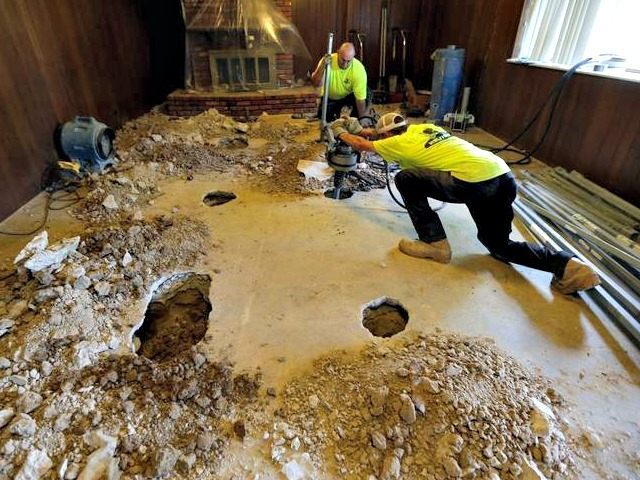California has always had problems with homes being damaged due to earthquakes. But heavy draining of groundwater over the last four years of a persistent drought is magnifying ground subsidence that it is already destroying infrastructure and homes in the Central Valley.
Damage to homes from groundwater depletion is expected to begin reaching the heavily populated Bay Area and LA Basin over the summer.
Conservatives have long hoped “Left Coast” would break-off and fall into the Pacific Ocean. The San Andreas Fault System, which crosses California from the Salton Sea in the south to Cape Mendocino in the north, is caused by the relentlessly northwest movement of the Pacific Plate along the North American Plate. Traveling at about the rate that fingernails grow, or about 46 millimeters per year, the regular occurrence of strike-slip earthquakes happen because plate’s are moving horizontally past one another. There is no risk of California falling into the ocean, but eventually Los Angeles and San Francisco will be next door neighbors.
The California Earthquake Authority, the state-run entity that is the largest provider of earthquake insurance in the U.S., only has some 800,000 policies in force in the state. That amounts to only about 10 percent of Californians purchasing earthquake coverage, according to the California Insurance Department.
But a bigger problem for Californians is the expansive soil due to underground layer of permeable clay soil that runs the length of the state’s coast and inward about 100 miles. California soil subsidence already causes more home damage than earthquakes, floods and wind storms combined. This type of earth movement is usually subject to exclusion statements in homeowner insurance policies that deny coverage for damages.
With groundwater now suppling about 60 percent of California’s water, tens of thousands of groundwater pumps that run day and night are sucking up about 5 percent of the state’s total electricity, according to an analysis by Reveal. That’s a 40 percent increase over normal years and about enough to power San Francisco for three years.
Consequently this summer, all-time records for groundwater depletions are expected across the state with thousands of miles of land in the Central Valley already suffering subsidence. The sinking is starting to destroy bridges, crack irrigation canals and twist highways across the state, according to the U.S. Geological Survey.
The most visible damage from subsidence in the Central Valley is the broken concrete lining along the Delta-Mendota Canal that starts at the C.W. Bill Jones Pumping Plant in Tracy, and runs 117 miles, parallel to the California Aqueduct. Caltrans is also suffering road and freeway cracking at alarming rates.
Two Fresno County bridges have sunk so much that they are nearly underwater and will cost millions to rebuild. A nearby elementary school is slowly descending into a miles-long sinkhole that will make it susceptible to future flooding.
One of the state’s canal systems is facing more than $60 million in repairs because one of its dams is sinking. Public and private water wells that cost about $500,000 to drill are being bent and twisted as the earth collapses around them; while potentially explosive natural gas pipes are popping out of the ground as the land sinks around them.
The parched, dry weather in the Central Valley is causing hundreds of homes to literally sink into the ground. By the time homeowners first notice small cracks on the wall, underground subsidence is already pulling the soil away from foundation. As homes begin to sink and tilt, the damage can become so extensive the house can break in half.
The damage from groundwater depletion is also about to start creating “adverse” challenges along California’s coastal regions this summer. The U.S. Geological Survey suggests that as a result of the continuing drought, there is now substantial risks for seawater intrusion and groundwater depletion subsidence in both the Bay Area and Los Angeles Basin.

COMMENTS
Please let us know if you're having issues with commenting.